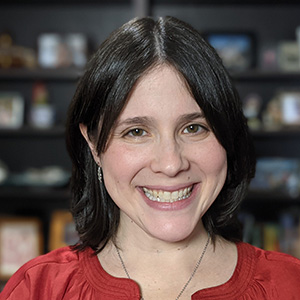To boost gender equity in the sciences, follow the evidence
In the wake of the recent U.S. Supreme Court decision that effectively ended race-conscious admissions, many universities and other institutions are looking at new ways to ensure their campuses and workplaces are diverse, equitable, and inclusive. These efforts are still necessary — especially in science fields — with women, and especially women of color, experiencing bias, discrimination, and harassment at multiple phases of their careers. Closing this gender gap has taken longer than expected given the gains in equal rights over the last several decades. Ironically, science itself has been underutilized in finding effective solutions.

Too often, institutions undertake well-intentioned equity efforts that are not evidence-based. But decades worth of social science research is starting to show what works, what sometimes works, and what doesn’t work when it comes to interventions meant to boost gender equity in the sciences. As I learned in writing a book on the subject, scientists are guiding the way to solutions, creating a research trail that institutions should follow.
Many of the challenges in science and engineering fields start right from the first introductory class in college, where professors might say something like “many of you are not going to make it.” Though the intent here may be to set realistic expectations, such statements can demotivate students, especially those who question whether they belong in the first place. Even if at the end of the day not everyone will stick with the major, such “weed out” statements run contrary to a large body of social science evidence on the power of signaling belonging.
During a 2021 interview for my recent book, Aneeta Rattan, a psychologist who studies organizational behavior at the London Business School, told me she often advises companies and institutions on the value of signaling belonging in a classroom or workplace. Work by Rattan and her colleagues showed how powerful it is when students think their professors believe in their scientific aptitude, especially for women and minority students. When she presents the idea to private companies that they should be communicating to new hires that they all have the potential to succeed, she says that there is almost no pushback. Within the academic world, this idea may be more controversial, as the traditional academic culture tends toward a model of culling the weakest, rather than cultivating potential talent.
Yet, study after study has shown the power of belonging across contexts. In a series of experiments begun in the 1990s, Geoffrey Cohen and colleagues at Stanford University studied how White and Black students reacted to different types of feedback. When presented with the same constructive feedback — the typical couching of something positive with something negative — Black students responded less favorably than White students. But things changed when the researchers paired an invocation of a high standard with an assurance that the students could meet the standard (a statement such as “we have high standards but know you can rise to them”).
In both the original lab studies and subsequent field experiments, which were replicated for different populations, researchers found that this “wise feedback” leads to more positive outcomes for minoritized individuals. Wise feedback is therefore a great example of an evidence-based approach for professors, employers, and others to offer criticism that is not only constructive but can help motivate others to succeed, thereby switching from a mentality of weeding out to one of growing talent.
While interventions to signal belonging show positive results in the social science literature, other efforts for equity like gender-blind review show more mixed results.
The idea of stripping out gender from job application processes appears to be an obvious solution in the light of research on gender bias. In 2012, for example, social psychologist Corinne Moss-Racusin and colleagues published a seminal paper in the Proceedings of the National Academy of Sciences showing that two resumes, identical in every respect other than their names, were rated vastly differently by faculty members in science fields. The difference was that half the resumes were labeled with the name “John” and the other half with the name “Jennifer.” Those with the male-associated name were ranked more hirable and competent than those labeled with the female-associated name.
Replicated many times, including looking at the intersection of race and gender, the study exposed widespread implicit gender bias in hiring for science positions. It also raised the question of whether hiding applicants’ names during review would solve the problem. In one study of gender-blind review, Julian Kolev and colleagues looked at innovative research grant proposals submitted to the Gates Foundation from 2008 to 2017 that had been anonymized to remove gender. The researchers found that proposals submitted by female applicants received significantly lower scores than those submitted by male applicants.
After controlling for proposal topics, measures of applicant quality, and characteristics of the proposal reviewers, they found that different types of language used by men versus women (broader vs. narrower terms, for example) in the proposals led to the differences in ratings. Making the review gender blind was not enough to counter gender-related implicit bias.
Despite this work, however, others have used gender-blind review successfully to reduce gender bias in their selection processes. For example, in 2019, NASA used a double-blind review process (where both reviewers and applicants are anonymous) to decide who gets time on their telescopes after seeing that such a process with the Hubble Space Telescope reversed a long-standing trend of men being awarded more time than women. Other agencies and laboratories have followed suit.
So why do gender-blind methods work sometimes and not at other times? Psychologist Rattan suggests it’s because such interventions reduce the activation of an unconscious bias, rather than address the bias itself. As suggested by Kolev’s team in their paper, training reviewers on how to evaluate different types of proposal language would have a greater effect than the gender-blind review.
After getting hired into positions, a common tough juncture for many women in science, especially in academia, is starting a family while trying to advance in their careers. In academia, this timing often corresponds with the race to achieve a tenured position, an indefinite academic appointment that comes with many protections. It can take several years to achieve tenure, depending on the institution, and that time period is often thought of as a trial period for junior-level faculty to show their track record.
One concern during this time is that those who take time off to care for their children will be penalized. In recent decades, many institutions have offered the option for new parents to stop the so-called tenure clock — giving assistant professors a pause in the timeline so that they have time after taking parental leave to publish, teach, and more, in order to strengthen their case for tenure.
While well-intentioned, research has found that pausing the clock actually causes some women to fall even further behind. A 2016 study found that gender-neutral tenure clock stopping policies actually decreased female tenure rates while increasing male tenure rates within economics departments. Similarly, a 2021 study highlighted the productivity gap between tenure-track men and women in business, history, and computer science departments.
What helps to close this productivity gap appears to be flexible childcare options. Providing funding and support for childcare may still an underutilized tool for retention of women in academia, according to the 2021 study.
While many of these problems and solutions are unique to academia, the underlying principles — of belonging and fairness — are universal across industries and in the private sector. Social science research holds enormous potential for creating working environments in which everyone can thrive without the need to arbitrarily weed people out. There is no one single intervention or policy that will close the gender gap in the sciences, but taking evidence-based approaches consistently over time will undoubtedly move us closer.
This article was originally published on Undark. Read the original article.

Enjoy reading ASBMB Today?
Become a member to receive the print edition four times a year and the digital edition monthly.
Learn moreGet the latest from ASBMB Today
Enter your email address, and we’ll send you a weekly email with recent articles, interviews and more.
Latest in Opinions
Opinions highlights or most popular articles

Debugging my code and teaching with ChatGPT
AI tools like ChatGPT have changed the way an assistant professor teaches and does research. But, he asserts that real growth still comes from struggle, and educators must help students use AI wisely — as scaffolds, not shortcuts.

AI in the lab: The power of smarter questions
An assistant professor discusses AI's evolution from a buzzword to a trusted research partner. It helps streamline reviews, troubleshoot code, save time and spark ideas, but its success relies on combining AI with expertise and critical thinking.

How AlphaFold transformed my classroom into a research lab
A high school science teacher reflects on how AI-integrated technologies help her students ponder realistic research questions with hands-on learning.

Writing with AI turns chaos into clarity
Associate professor shares how generative AI, used as a creative whiteboard, helps scientists refine ideas, structure complexity and sharpen clarity — transforming the messy process of discovery into compelling science writing.

Teaching AI to listen
A computational medicine graduate student reflects on building natural language processing tools that extract meaning from messy clinical notes — transforming how we identify genetic risk while redefining what it means to listen in science.

What’s in a diagnosis?
When Jessica Foglio’s son Ben was first diagnosed with cerebral palsy, the label didn’t feel right. Whole exome sequencing revealed a rare disorder called Salla disease. Now Jessica is building community and driving research for answers.

